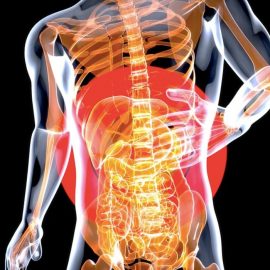

This article is an excerpt from the Shortform book guide to "Come As You Are" by Emily Nagoski. Shortform has the world's best summaries and analyses of books you should be reading.
Like this article? Sign up for a free trial here .
What is the secret to having more and better orgasms? Why does it seem like your body sometimes resists an orgasm?
According to Emily Nagoski, the author of Come as You Are, the key to having more (and better) orgasms is to deactivate the SIS (sexual inhibition system) and slowly activate the SES (sexual excitation system). In other words, we need to eliminate what our brain sees as reasons not to have sex and gradually increase the frequency and intensity of what turns us on.
Here is how to have more orgasms, according to sex researcher Emily Nagoski.
How to Have More Orgasms
In her book Come as You Are, sex researcher Emily Nagoski explains how to have more orgasms (and better!). She says the solution is two-fold: 1) to deactivate the SIS (sexual inhibition system) by eliminating all the reasons not to have sex and 2) to activate the SES (sexual excitation system) by increasing the frequency and intensity of what we find sexually pleasurable.
To create an environment where this is possible, Nagoski insists we must get all of the internal states of our mesolimbic cortex—things like comfort, hunger, and sleepiness—to work together rather than against each other. What this means is that we need to be fully present in the moment, without any of our various internal states trying to pull us away from the goal at hand (the goal being having an orgasm). For example, even if you’re in the comfort of your own bed and relatively energized, you’ll find it difficult to focus on having an orgasm if you haven’t eaten in 8 hours.
| Treating Our Needs as a Hierarchy Nagoski’s insistence that our internal states must work together for us to be present in the moment is reflected in other theories as well. Maslow’s Hierarchy of Needs, for example, is based on the idea that there are more basic needs that must be met before a person can focus on other things. According to the hierarchy, physiological needs (such as food) are the most fundamental, followed by safety (financial security), love and belonging (friends), esteem (achievement), and self-actualization (fulfillment). In other words, if our basic needs aren’t met, we aren’t going to be able to focus on experiencing pleasure. One fundamental way in which Nagoski and Maslow’s ideas differ, however, is that Maslow classified sex as a physiological need on the same level as food and sleep. As previously discussed, Nagoski would disagree with this categorization, because she argues that desire for sex isn’t motivated by survival, and going without sex causes no negative physical consequences. Most likely, she would classify sex—and especially pleasure—as higher on the hierarchy. |
The Keys to Becoming Fully Present
So, how do we become fully present in the moment? Nagoski says three things can make this happen: 1) handling stress, 2) creating a context conducive to sex, and 3) closing the gap between expectations and reality.
One example of this is adjusting the goal from having an orgasm to simply experiencing pleasure during sex—orgasm or not. This releases us from the expectation of orgasm and prevents anxiety from activating the SIS.
| Another way to close the gap between expectations and reality is to live by the Zen philosophy of “emptying your cup.” According to the Zen proverb, when your mind—or “cup”—is full of preconceived ideas and beliefs, you become trapped by your patterns of thinking and behavior. To open yourself up to new possibilities, you must “empty” your existing expectations. The best way to do this is to identify a problematic core belief and gather evidence that refutes it. For example, if you believe you’re broken because you don’t orgasm every time you have sex, you should search for evidence to contradict that idea—do the women you know have an orgasm every time they have sex? Is there any credible information to support your belief? |

———End of Preview———
Like what you just read? Read the rest of the world's best book summary and analysis of Emily Nagoski's "Come As You Are" at Shortform .
Here's what you'll find in our full Come As You Are summary :
- Why women should change the way they talk, think, and feel about their sexuality
- A look at the misinformation and harmful cultural messaging surrounding sex
- A discussion around the individual experiences of arousal, desire, and orgasm






